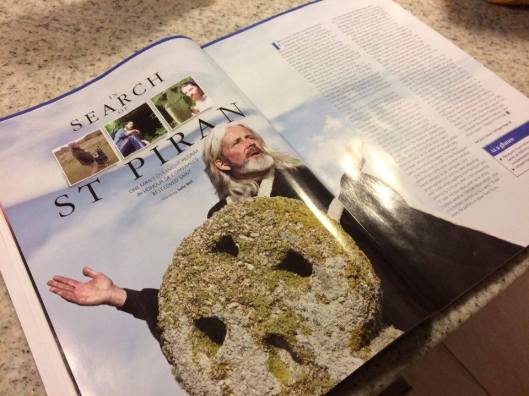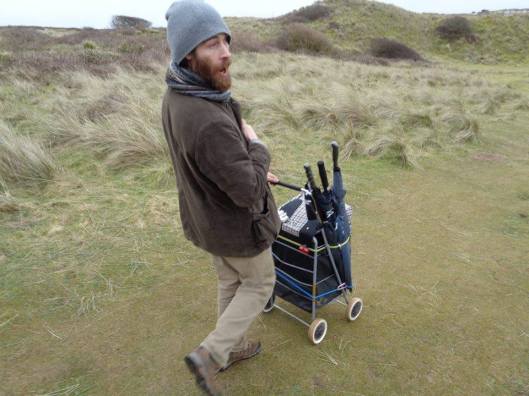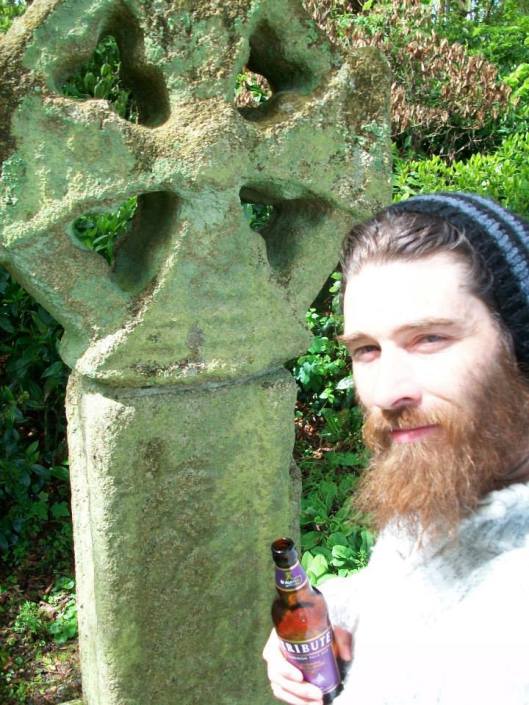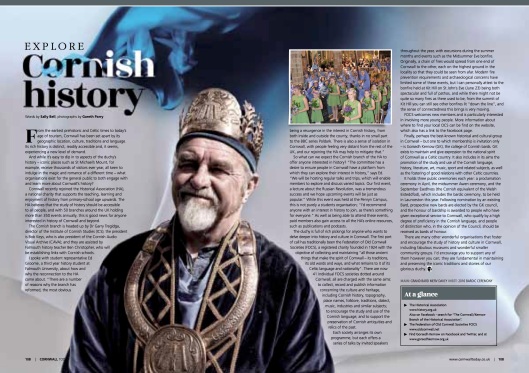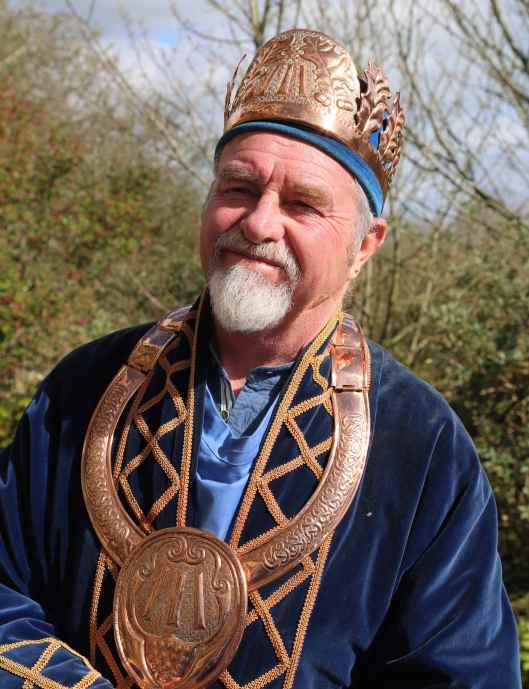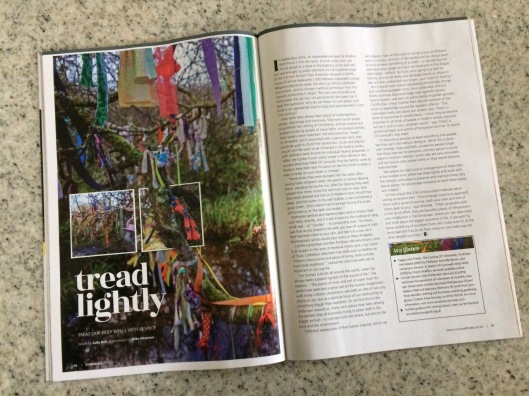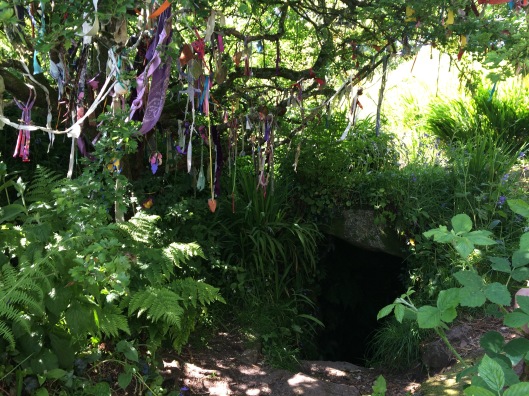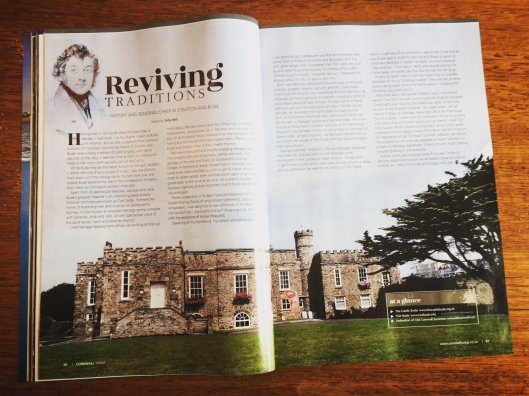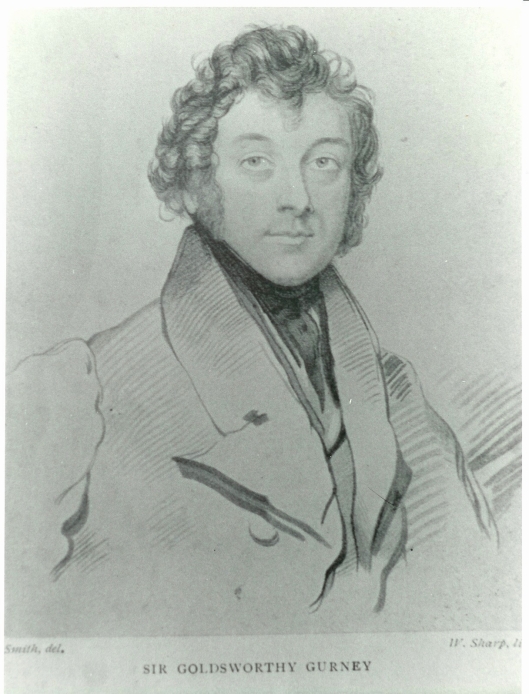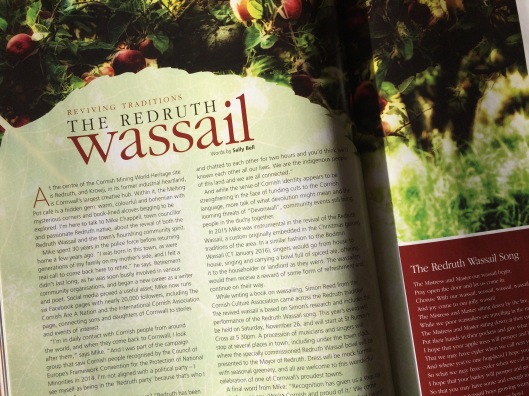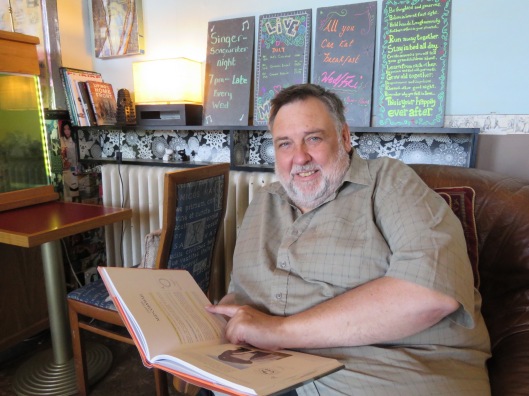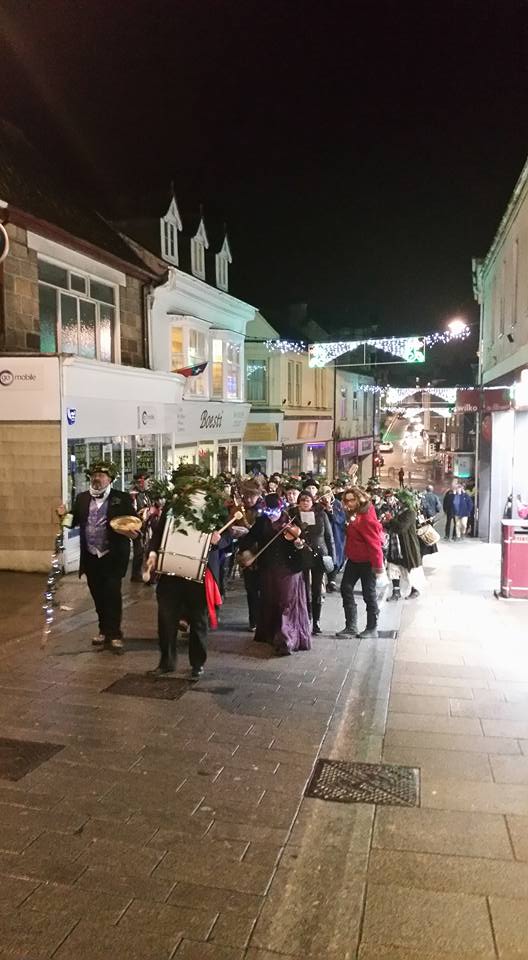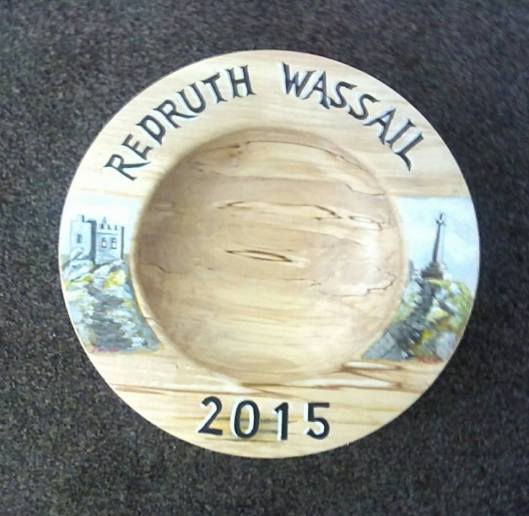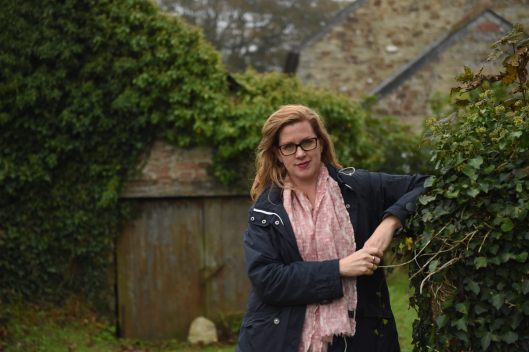** Originally published in the Western Morning News, March 2017
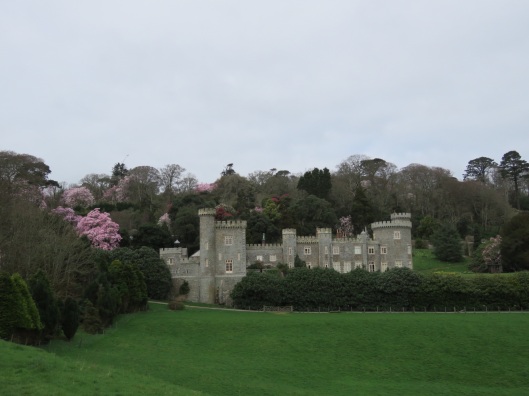
Caerhays Castle, Cornwall
There are few things as joyful as driving down a Cornish lane in early spring, with hedgerows fully laden with new life and the promise of the season to come. The delight of seeing daffodils peeping out and the sighting of the first primroses are hard to surpass, especially if it’s been a long, grey February, which this year it feels as if it was. Growing up in Australia, I never really understood the great excitement – and relief – around the first signs of springtime in Europe; where I lived, spring merely meant that the days went from mild to warm, the wattle (or mimosa as it’s known here) would come into bloom and the Melbourne Cup wasn’t far away. European-style gardens were highly regarded in Melbourne and I was a regular visitor to “open garden” days where I would coo over camellias, rave about rhododendrons and marvel over magnolias. I developed a particular love of magnolias and went to magnolia workshops (yes such a thing exists in Australia) where I learned to tell the difference between a stellata and a soulangeana and dreamed of having a space large enough to finally have my own magnificent specimen.
In recent weeks as the magnolias of the South West began to show signs that they were ready to burst forth, it was with some sense of shame that I confessed to a friend that I’d never visited the Cornish estate that is probably best known for its National Collection of over 450 magnolias – Caerhays Castle and Gardens. So, it was with great delight that a few days later we found ourselves winding down the lanes from St Austell to the south coast of Cornwall in search of these giants of the floral world.
As we reached the village of St Michael Caerhays itself, with its chocolate box cottages, primrose-laden roadsides and abundance of self-entitled meandering pheasants, the road opened up to a magnificent view of the sea. In fact, that’s the first great delight of Caerhays – it has its own beach, Porthluney Cove. The car park for the estate is next to the beach and overlooks a perfect stretch of the Cornish coast, complete with granite cliffs, caves to explore and a fabulous beach café.
Pronounced “Car-hays”, or with the Cornish tongue slipping over the first syllable, “C’hays”, or, if you’re from the village, “C’raze”, the property has only been owned by two families. From 1370 – 1840 it was in the ownership of the Trevanion family, who lived in four different houses, the last of which is the Castle we see today.
In 1854, Michael Williams of Burncoose and Scorrier purchased the Estate and set about restoring the Castle which had fallen into dereliction. At that stage, Williams was reputed to be “the richest man in Cornwall”, and his fortune made from mining was put to good use at Caerhays. His relative, John Charles Williams (known as JC) was responsible for creating the gardens we now see today; he was fascinated with the work of the great Victorian and Edwardian plant hunters and was determined to exhibit plants, which were until then previously unseen in Europe.
The property passed from JC to his son Julian, and now belongs to Julian’s son Charles, who runs the 140 acre Estate and its associated businesses including Burncoose Nurseries in Redruth which regularly exhibits at the Chelsea Flower Show, winning a coveted Gold Medal for their garden there in 2016. Charles is a member of the RHS Rhododendron, Camellia and Magnolia Group and has put forward many new varieties of these plants for registration and awards. Charles is supported by a dedicated team including Head Gardener Jaimie Parsons, who since starting at Caerhays in 1994 has instigated the greatest expansion of the gardens since the early 20th century.
“The estate is made up of several businesses, each important in their own right”, says Lucinda RImmington, Marketing Manager of Caerhays. “As the gardens are at their best in spring they are only open from 16 February to 18 June. After that, the Estate focusses on events at the Castle, but people come from all over the world to see the magnolias. We get lots of phone calls from people checking to see what state of bloom they’re in so they don’t miss them, then they plan their trip accordingly”. Caerhays is an understandably popular wedding venue – being by the sea with the Castle as a background – and there is also a busy holiday let business with cottages available all year round. Staying on the Estate must be a wonderful experience, and I made a mental note to put The Vean, which sleeps 16, on my bucket list for a once-in-a lifetime future house party. There’s also the Coastguard’s Lookout which is licensed as a wedding venue for twenty people.
The property is also very popular with shooting parties, and has a pheasant-breeding programme, which explains the numerous feathered pedestrians I encountered on the drive through the village. It is also mentioned in the Poldark books and with its established track record as a filming location (filming for Tim Burton’s “Miss Peregrine’s Home for Peculiar Children” took place on the Estate and the beach in 2015), it is hoped that it may feature in a future episode of the current television adaptation. Caerhays is a great example of a Cornish business that has adapted to make the most of all of the seasons, not just spring and summer – there’s always something going on.
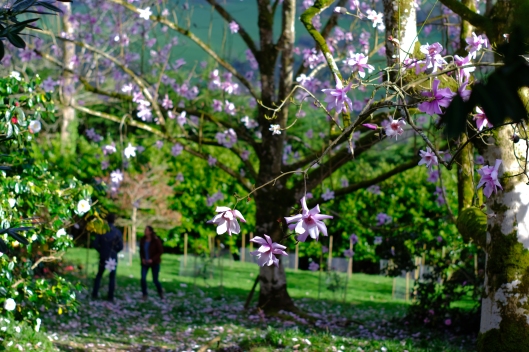
Caerhays Castle, Cornwall, image supplied
Caerhays is the holder of the Plant Heritage National Collection of Magnolias, one of only four sites in the UK to have this honour. The oldest magnolia on the site is a stellata or “star” magnolia at the front of the castle which was planted in 1897. A number of the distinctive magnolias raised at Caerhays including “Caerhays Belle” and “Caerhays Surprise” are also available to purchase through Burncoose Nurseries.
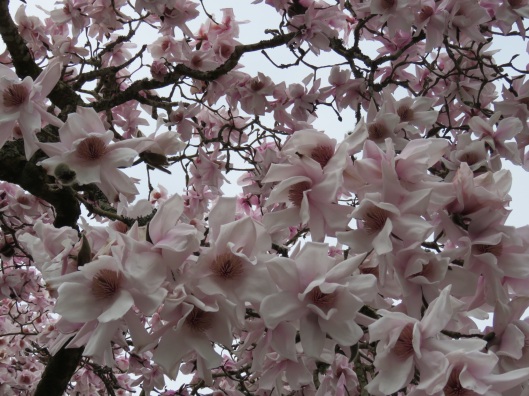
Magnolia at Caerhays Castle, Cornwall
The garden is also one of the twelve “Great Gardens of Cornwall” and is one of the key gardens that is included in the measurement of when spring arrives in the Duchy. Six nominated magnolias are monitored in six Great Gardens to record the date when at least 50 blooms have flowered on each tree – this year spring “arrived” on 28 February. You can find more information at www.greatgardensofcornwall.co.uk and follow the “bloomometer” for each garden.
Pick up a flyer for the Great Gardens of Cornwall, have it stamped when you pay your entrance fee then you can get discounted entry at the other gardens in the scheme when you show your stamped flyer.
After leaving the beach car park, we crossed a road to walk through the archway of a crenelated gatehouse, then past a lake where geese and swans happily bickered, and up a sweeping driveway where the Castle revealed itself. Built in 1808 by the well-known Regency architect John Nash, it sits elegantly on the side of a hill, and at this time of the year when the mature trees that surround it are in full flower, the first sight of Caerhays makes a lasting impression.
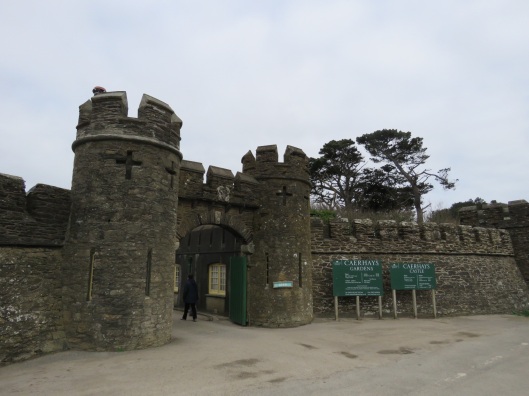
Entrance to Caerhays Castle, Cornwall
In the Cornish edition of his definitive text, “The Buildings of England”, Pevsner describes Caerhays Castle as “A very picturesque mansion, in a superb position overlooking Porthluney Bay, so deeply hidden in its woods that the sudden revelation of the castle with its battlemented walls and square and round towers among ornamental trees and shrubs is breath taking”. I quite agree.
The walk up to the Castle is an easy one, not so some of the estate paths (more on this later), but there is plenty of help available at the ticket office to advise on which paths might be appropriate to tackle. There are spring flowers of every kind everywhere you look – primroses, daffodils, camellias, rhododendrons and the stars of the show, magnolias. We enjoyed a morning coffee in the Magnolia Tea Rooms in the Castle yard then set off on a walk around the garden.
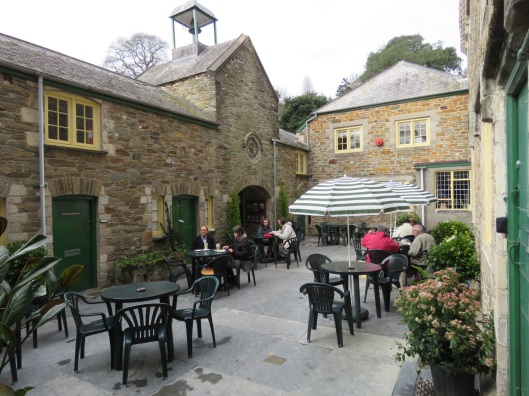
Magnolia Tea Room courtyard at Caerhays Castle, Cornwall
As an avid gardener and a great lover of plants, for me walking through Caerhays Garden was like walking through fairyland. We had been worried that the grey skies would take away from our enjoyment of the colours of the plants – there’s nothing quite like the vivid colours of a magnolia contrasting against a Cornish blue sky – but we weren’t at all disappointed.
There are four colour-coded walks which take in different aspects of the garden and are suitable for different abilities. We took the Blue Route up into the Main Ride and one of the first large trees we saw was the stunning Magnolia Sargentiana (var. Robusta x Sprengeri “Diva” if you’d like its full pedigree) known as “Julian Williams”. This huge tree was full of spectacular deep pinky-purple flowers and in spite of its size is a newly registered hybrid. There was something to see everywhere we looked, with plenty of well-placed benches for walkers to stop and enjoy the spectacular views.
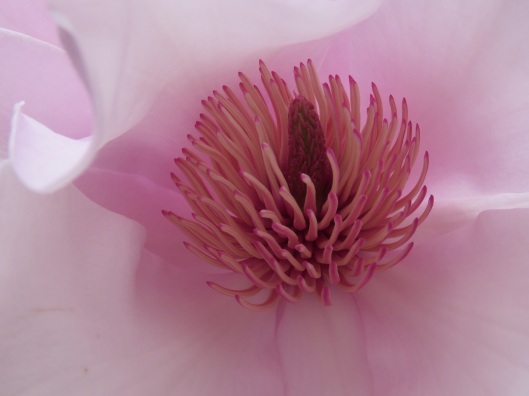
Magnolia at Caerhays Castle, Cornwall
Of all the plants I saw, my favourite was the magnolia on the mound just to the left of the archway that goes through to the Castle yard. It was a hybrid unique to Caerhays – its parent was Magnolia sargentiana var robusta but because it’s so old it’s not known what it’s been hybridised with. The form of its petals reminded me of Balenciaga ball gowns floating down the Parisian catwalks in the 1950s; they were flouncy and heavy, and each one looked like it had been painted with watercolours. All around the ground underneath were the outer coverings of the flowers which resembled a scattering of small furry creatures quietly resting and once again, I felt as if was in fairyland.
Hybridisation of magnolias has been taking place at Caerhays for generations. Phillip Tregunna, the former head gardener lead the way, to be followed by Jaimie Parsons and his team. I spoke to Deputy Head Gardener Michael Levitt about the technical process of registering a new variety of magnolia. “Hybridising is a really important part of what we do”, says Michael. “Once we have a new magnolia, we contact the Magnolia Society and go through an administrative process that records what the parents of the plant were, the height of the tree, when it was planted, when it first flowered – it’s a bit like registering a new baby! You also need to supply pictures of the flowers, you have to colour match the pictures to a colour-chart and when it’s approved you can reproduce the plant and sell it.” I asked Michael how he feels when he’s seen the process through over years? “None of mine have been named yet as it takes so long to do, but Jaimie feels very proud when he sees the plants on display. We submit them to the RHS Flower Shows and also really look forward to attending the Cornwall Spring Flower Show at Boconnoc in April”.
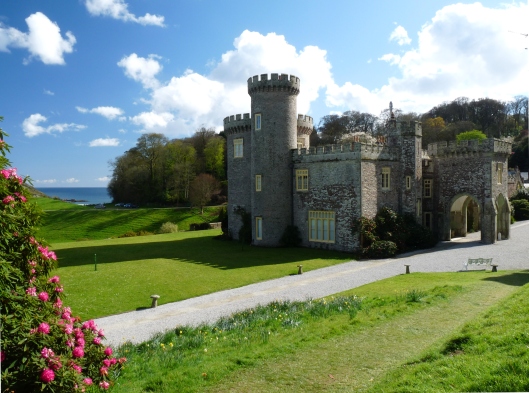
Caerhays Castle, Cornwall, image supplied
I asked Lucinda what is special about working at Caerhays? “Every season is so lovely, and I’ve been here for a few years now and every year we’re all still just so excited. We all love coming in to work to see what stage of bloom the plants are at and you never bore of them. Every time you drive down the hill something looks different, something new will have come into bloom or the sea looks different. Right now, it’s so wonderful and I just find it really uplifting. My favourite place to sit is a bench just around from the Castle that looks to down across the lake and out to sea, it’s so lovely”.
Seeing spring flowers, especially if they’re as magnificent as those at Caerhays, has an undoubted positive psychological impact and anyone wanting to brighten their week must take a trip to Caerhays. I left feeling renewed and inspired, with an even greater sense of plant-envy and a shortlist of plants I’d like to order from Burncoose. I can’t wait to have a little piece of Caerhays magic in my garden, and with the Grade I Castle open for tours on Monday, I’m already planning a return visit.
Caerhays Estate
Gorran, St Austell, PL26 6LY
Gardens open daily but be quick – they’re only open until 18 June. Guided tours available.
Castle open for guided tours from 20 March – 16 June, bookings essential.
Dogs welcome in the garden on leads.
Ph 01872 501310
caerhays.co.uk
(C) Sally Bell 2017
With thanks to the Caerhays Castle Estate for supplying some images

















